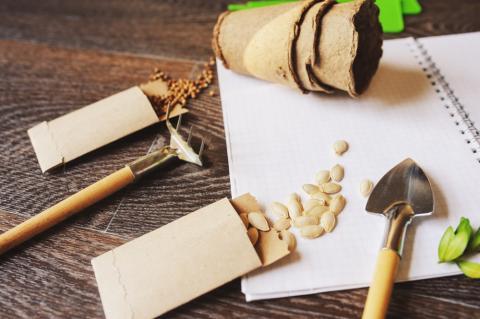
Garden planning can be exciting, fun, and challenging all at the same time. It requires us to map out and strategize the what, where, when and how of our garden. When done correctly, the process can help us yield an awesome harvest. Whether you are designing a simple flowerbed or a complex veggie garden, here are 10 important tips that will help make your garden planning a little easier.
1. Understand Your Growing Area & Season
Figuring out what grows within your area and season of planting will help you decide what you should grow in your garden. Is the specific season in your area sunny, cold, warm, or rainy? These factors are vital to take into consideration when choosing which plants to grow.
2. Determine Your Garden Goals
What are your gardening goals? Plan your garden based on what you need or wish to achieve with it. Do you want to grow your own herbal tea garden? Are you considering growing your own fruits and vegetables instead of purchasing them? Determining the desired outcomes for your garden can help you better plan your garden.
3. Consider Costs
When developing your garden plan, it is always good to take into account what the costs or expenses will be. Sometimes you need to spend a little to get a lot. Consider the types and amounts of resources that your garden will require, such as water, fertilizer, compost, seeds, labor, and even gardening tools. Figuring out the costs will help you budget accordingly.
4. Know Your Soil
It is important to know what your garden’s soil type is, as well as the pH and nutrient levels. These factors can determine if you need to take any further steps to improve the soil, so that your plants of choice can grow successfully. For those of you who would like to learn how to improve your soil naturally, check out this article.
5. Determine Amount Of Sunlight Exposure Needed
Determining the amount of sunlight exposure is just as important as determining what kind of soil or how much water you need. For example, if you want to try and plant tomatoes, you will need an adequate amount of sunlight, whereas leafy greens only require a little bit of sun each day. The location of your plants depends a lot on the amount of sunlight they require.
6. Know Your Growing Space
How much growing space do you have available? Depending on the space you have for gardening, you may choose to grow larger or smaller vegetation. You will also need to measure how much spacing between each plant you will need. Knowing how much room you have to work with will help you get the most out of your space.
7. Consider Using The Three Sisters Gardening Technique
Another thing to consider is the Three Sisters gardening technique, also known as companion planting. When certain plants are planted next to other certain plants, they can sometimes benefit a lot from each other. For example, sometimes other plants can act as a form of natural pest control for other plants. Pairing plants that work with each other can help you yield a better harvest.
8. Determine Location
Once you have determined your garden spacing, the resources needed, the amount of sunlight, and what plants you want near each other, you can determine your garden and plant location.
9. Draw Out Your Plan
It can be extremely helpful to draw out and label your garden plan. You can draw and label a map of what you are planning to grow and where you want to grow it. This way if you forget the location or what plant you chose, you can always come back to your drawing as a reference. This is my favorite part about garden planning, and you can even color it too!
10. Keep A Gardening Journal
Keeping a gardening journal is a great way to write or draw out your plan, as well as log what is happening in your garden. You can draw a labeled map, create a list of things you want to grow, write down gardening expenses, jot down ideas, record observations, and keep track of dates or growing times. A gardening journal can help you stay organized, and it is great for looking back on as a reference for the next time you do your garden planning. Creating your own is enjoyable, but a gardening journal can also be purchased at most gardening stores.
It is good to keep in mind that creating a garden plan can take some time, but the better the plan, the better the harvest.








